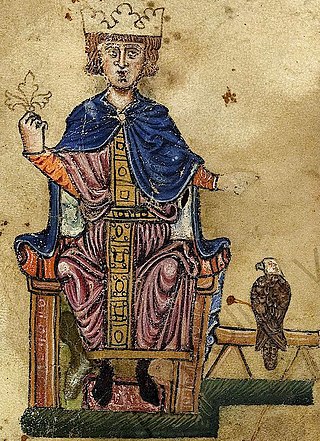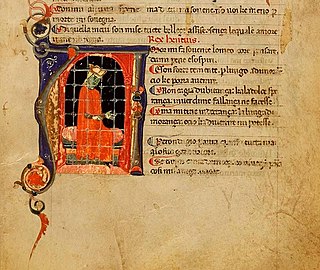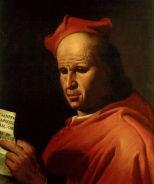
The Hohenstaufen dynasty, also known as the Staufer, was a noble family of unclear origin that rose to rule the Duchy of Swabia from 1079, and to royal rule in the Holy Roman Empire during the Middle Ages from 1138 until 1254. The dynasty's most prominent rulers – Frederick I (1155), Henry VI (1191) and Frederick II (1220) – ascended the imperial throne and also reigned over Italy and Burgundy. The non-contemporary name of 'Hohenstaufen' is derived from the family's Hohenstaufen Castle on Hohenstaufen mountain at the northern fringes of the Swabian Jura, near the town of Göppingen. Under Hohenstaufen rule, the Holy Roman Empire reached its greatest territorial extent from 1155 to 1268.

Otto IV was the Holy Roman Emperor from 1209 until his death in 1218.

Frederick II was King of Sicily from 1198, King of Germany from 1212, King of Italy and Holy Roman Emperor from 1220 and King of Jerusalem from 1225. He was the son of Emperor Henry VI of the Hohenstaufen dynasty and Queen Constance of Sicily of the Hauteville dynasty.
Henry the Proud, a member of the House of Welf, was Duke of Bavaria from 1126 to 1138 and Duke of Saxony as well as Margrave of Tuscany and Duke of Spoleto from 1137 until his death. In 1138 he was a candidate for the election as King of the Romans but was defeated by Conrad of Hohenstaufen.

Frederick II, called the One-Eyed, was Duke of Swabia from 1105 until his death, the second from the Hohenstaufen dynasty. His younger brother Conrad was elected King of the Romans in 1138.

The Duchy of Spoleto was a Lombard territory founded about 570 in central Italy by the Lombard dux Faroald. Its capital was the city of Spoleto.

Enzo was an illegitimate son of the Hohenstaufen emperor Frederick II, who appointed him 'King of Sardinia' in 1238. He played a major role in the wars between Guelphs and Ghibellines in the Imperial kingdom of Italy, and was captured by his enemies in 1249. He remained imprisoned in Bologna until his death.
The Duke of Spoleto was the ruler of Spoleto and most of central Italy outside the Papal States during the Early and High Middle Ages. The first dukes were appointed by the Lombard king, but they were independent in practice. The Carolingian conquerors of the Lombards continued to appoint dukes, as did their successors the Holy Roman Emperors. In the 12th century, the dukes of Spoleto were the most important imperial vassals in Italy. From 1198, the Duchy became under the sovereignty of the States of the Church.
Christian I (c. 1130 – 23 August 1183), sometimes Christian von Buch, was a German prelate and nobleman. He was Archbishop of Mainz and Archchancellor of Germany from 1165 until his death in 1183. He was originally elected archbishop in 1160 in a disputed election. He served the Emperor Frederick I as a diplomat in Italy on two occasions.

The March of Tuscany was a march of the Kingdom of Italy and the Holy Roman Empire during the Middle Ages. Located in northwestern central Italy, it bordered the Papal States to the south, the Ligurian Sea to the west and Lombardy to the north. It comprised a collection of counties, largely in the valley of the River Arno, originally centered on Lucca.
Otto II, the Rich, a member of the House of Wettin, was Margrave of Meissen from 1156 until his death.

Henry VI, a member of the Hohenstaufen dynasty, was King of Germany from 1169 and Holy Roman Emperor from 1191 until his death. From 1194 he was also King of Sicily.

Raniero Capocci, also known as Ranieri, Rainier, or Rainerio da Viterbo was an Italian cardinal and military leader, a fierce adversary of emperor Frederick II.

Conrad of Querfurt was a prince of the church in the Kingdom of Germany. He was the bishop of Hildesheim (1194–1199) and the bishop of Würzburg (1198–1202), served two kings as chancellor (1194–1201) and went on the Crusade of 1197.

The Rocca Maggiore is a castle which dominated, for more than eight hundred years, the city of Assisi and the valley of Tescio, constituting their principal defensive fortification.
Conrad of Urslingen may refer to:
Berthold of Urslingen was a German nobleman whose career was spent almost entirely in central Italy, where his family had a claim to the duchy of Spoleto.










